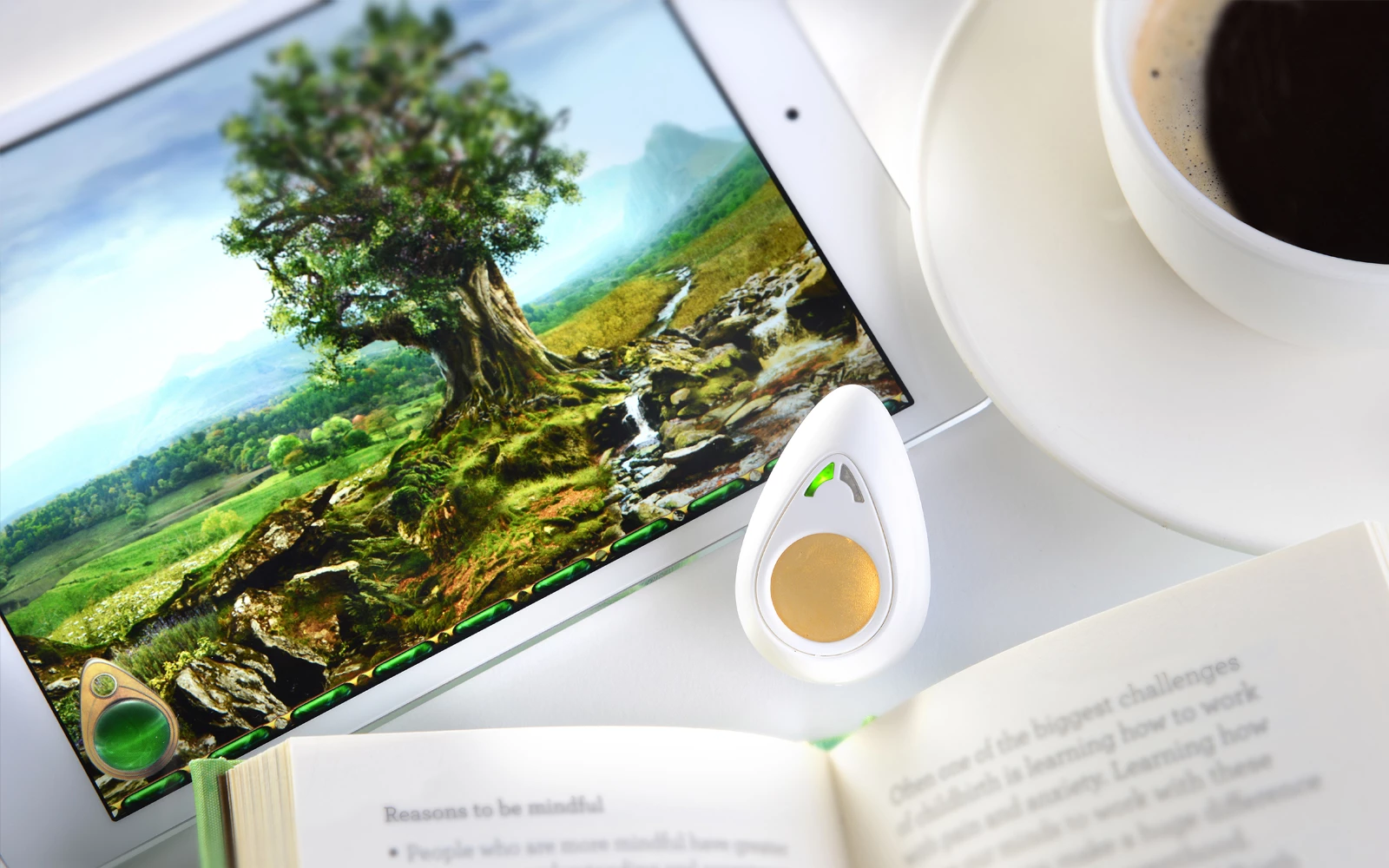The Pip, created by Galvanic, has been on the market for about 18 months and it works by detecting changes in the skin's ability to conduct an electrical current or what is called Electrodermal Activity (EDA). Hold the Pip between your thumb and forefinger and it senses the EDA to determine whether you are stressing or relaxing. The audio and visual elements with the accompanying Pip apps provide the biofeedback to help you learn how to control the former and induce the latter
The proliferation of devices is often blamed for the increased stress people are feeing, whether it be real or imagined. Either way, we were trying not to get too anxious about what we'd find out about our own stress levels when we were given a Pip device for review.
It's a pretty easy setup with either an Android or iOS device once the Pip is charged. Download one of three different apps created for the Pip (Clarity, the Loom, and Relax and Race), make sure your Bluetooth connection is on, pare your device with the Pip, set up your user information, pick the app you want to use, and you're good to go. Pretty stress-free.
We got an overview from the Galvanic marketing staff ahead of time and were encouraged to use the Clarity app first, given that it was more focused on introducing the user to relaxation techniques rather than expecting you to know them from the start.

What makes Clarity interesting is that it uses sound to indicate stress levels – the more stress the Pip senses, the louder the sound. You can choose between rain, ocean or crowd noise. A quick review of all three and we decided to stay with rain.
You can also choose between four different stress relief techniques that include breathing, mantra, body scan and unguided. Once you've chosen one, a calm, female voice directs you to sit relaxed, close your eyes and gently hold the Pip.
After you hear the initial directions, the sound of the rain takes over. The more your mind wanders, the louder the rain gets, turning into a full on thunder storm when you're really letting it go its own way or if you start thinking about something really bugging you. Settle back into whichever relaxation technique you've chosen and the storm begins to subside.
We tried the first three relaxation techniques a couple of times, but settled on using the breathing technique through most of the Clarity sessions.
You also have the ability to choose the length of your sessions -- anywhere from two to 60 minutes. Five-minute sessions seemed to be about as much time as we could squeeze in, and we tried to do them twice a day.

While Clarity provides the feedback via sound, the Loom app does so through three different landscapes: winter where your stress level turns the landscape from winter to spring, a twilight scene that turns to daylight, and a forest scape that goes from dark to light. It's worth noting that each of these have a very detailed visual landscape and accompanying music, so they do require a longer down load time.
Regardless of the app you choose, the goal is to get as close to 100 percent relaxation at the end of each session as possible. Surprisingly, the best we could do was 86 percent, which was the first day we used it. We managed a few days where we got close, but never quite achieved that highest score. Maybe it was performance anxiety.

We also thought the visual nature of the Loom might lead to a better score given that it allows you to actually see how you're "distressing," but that wasn't the case. We actually scored lower when using the Loom app than the Clarity app.
The only hiccup we ran into was that early on the app would stop right after the session was over, so about a fourth of our early sessions were never recorded. A short call with the Galvanic team cleared that up and we were able to get everything synced up again. But we lost our information from those interrupted sessions.
Devices that help reduce stress and help you train the brain to focus have become more prolific over the last several years. Several have been introduced that focus on brain wave monitoring to either provide a basis for biofeedback or at least a visualization of your brain activity under stress. These include the Muse headband and the Melomind headset.
Pip is different because it's measuring the activity at the skin level, and it has size and convenience going for it. It fits in the palm of your hand with room to spare, allowing you to use it anywhere and without donning anything on your head.
While we probably could have seen more improvement in our ability to focus and destress had we used the Pip more consistently each day and over a longer period of time, we did see the benefit of using it during the several weeks we had it. Despite the initial app glitch, we think Galvanic is onto something.
Anyone interested in purchasing the Pip can do so for US$179 on the company website, or they can find it on Amazon or Best Buy.
For more information about the Pip, check out the video.
Product page: Pip
























